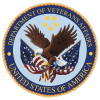The VA Office of Inspector General (OIG) examined whether Veterans Integrated Service Network (VISN) 21, the regional system of hospitals serving northern and central California, Nevada, Hawaii, the Philippines, and US territories in the Pacific Basin, effectively managed its nonrecurring maintenance (NRM) needs by executing each of its medical facilities’ long-range action plans. In FY 2012, VA established the target of reducing its maintenance backlog by 95 percent over 10 years.However, within VISN 21, deferred maintenance cost estimates have increased from $599.3 million (FY 2012) to $1.4 billion (March 2021), and VISN 21 medical facilities executed only 34 of the 190 approved NRM program projects (18 percent) for FYs 2015–2018. Several factors contributed to the identified issues: medical facilities were allowed to execute nonurgent, out-of-cycle projects; engineering staffing was insufficient to execute long-range action plans; medical facilities’ long-range action plans were not achievable based on the requested NRM program budget; and the NRM program lacked deferred maintenance performance metrics.As a result, VISN 21 has not substantially reduced its maintenance backlog, which poses the risk of health service interruptions for veterans, environmental problems, accidents, and increased operating costs. In addition to the backlog stresses on the NRM program budget, VA has relied on it to upgrade physical infrastructure needed for its new $10 billion electronic health record system.The OIG made seven recommendations to help VA more effectively manage NRM needs and clear its backlog. The recommendations included establishing and enforcing the urgent-need criteria; implementing and annually reviewing an engineering staffing model that aligns with medical facilities’ NRM needs; exploring the use of non-engineering staff, contractors, or shared engineering resources; ensuring long-range action plans are feasible based on NRM budget levels; and establishing NRM performance metrics.
Report File
Date Issued
Submitting OIG
Department of Veterans Affairs OIG
Other Participating OIGs
Department of Veterans Affairs OIG
Agencies Reviewed/Investigated
Department of Veterans Affairs
Components
Veterans Health Administration
Report Number
19-06004-225
Report Description
Report Type
Audit
Agency Wide
Yes
Number of Recommendations
0
Questioned Costs
$0
Funds for Better Use
$0


